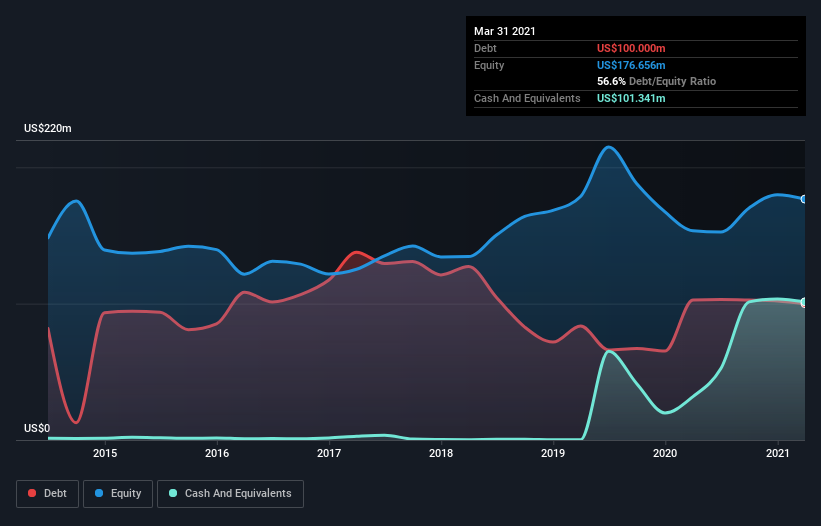These 4 Measures Indicate That Kforce (NASDAQ:KFRC) Is Using Debt Safely
Warren Buffett famously said, 'Volatility is far from synonymous with risk.' So it might be obvious that you need to consider debt, when you think about how risky any given stock is, because too much debt can sink a company. Importantly, Kforce Inc. (NASDAQ:KFRC) does carry debt. But is this debt a concern to shareholders?
What Risk Does Debt Bring?
Debt assists a business until the business has trouble paying it off, either with new capital or with free cash flow. If things get really bad, the lenders can take control of the business. However, a more common (but still painful) scenario is that it has to raise new equity capital at a low price, thus permanently diluting shareholders. Of course, the upside of debt is that it often represents cheap capital, especially when it replaces dilution in a company with the ability to reinvest at high rates of return. The first thing to do when considering how much debt a business uses is to look at its cash and debt together.
See our latest analysis for Kforce
How Much Debt Does Kforce Carry?
As you can see below, Kforce had US$85.3m of debt at March 2021, down from US$102.6m a year prior. But on the other hand it also has US$101.3m in cash, leading to a US$16.1m net cash position.
How Healthy Is Kforce's Balance Sheet?
Zooming in on the latest balance sheet data, we can see that Kforce had liabilities of US$125.6m due within 12 months and liabilities of US$191.1m due beyond that. On the other hand, it had cash of US$101.3m and US$244.2m worth of receivables due within a year. So it actually has US$28.9m more liquid assets than total liabilities.
This surplus suggests that Kforce has a conservative balance sheet, and could probably eliminate its debt without much difficulty. Simply put, the fact that Kforce has more cash than debt is arguably a good indication that it can manage its debt safely.
The good news is that Kforce has increased its EBIT by 8.7% over twelve months, which should ease any concerns about debt repayment. The balance sheet is clearly the area to focus on when you are analysing debt. But ultimately the future profitability of the business will decide if Kforce can strengthen its balance sheet over time. So if you're focused on the future you can check out this free report showing analyst profit forecasts.
Finally, a business needs free cash flow to pay off debt; accounting profits just don't cut it. While Kforce has net cash on its balance sheet, it's still worth taking a look at its ability to convert earnings before interest and tax (EBIT) to free cash flow, to help us understand how quickly it is building (or eroding) that cash balance. During the last three years, Kforce generated free cash flow amounting to a very robust 99% of its EBIT, more than we'd expect. That positions it well to pay down debt if desirable to do so.
Summing up
While we empathize with investors who find debt concerning, you should keep in mind that Kforce has net cash of US$16.1m, as well as more liquid assets than liabilities. And it impressed us with free cash flow of US$103m, being 99% of its EBIT. So we don't think Kforce's use of debt is risky. The balance sheet is clearly the area to focus on when you are analysing debt. But ultimately, every company can contain risks that exist outside of the balance sheet. We've identified 4 warning signs with Kforce , and understanding them should be part of your investment process.
If, after all that, you're more interested in a fast growing company with a rock-solid balance sheet, then check out our list of net cash growth stocks without delay.
This article by Simply Wall St is general in nature. It does not constitute a recommendation to buy or sell any stock, and does not take account of your objectives, or your financial situation. We aim to bring you long-term focused analysis driven by fundamental data. Note that our analysis may not factor in the latest price-sensitive company announcements or qualitative material. Simply Wall St has no position in any stocks mentioned.
Have feedback on this article? Concerned about the content? Get in touch with us directly. Alternatively, email editorial-team (at) simplywallst.com.

